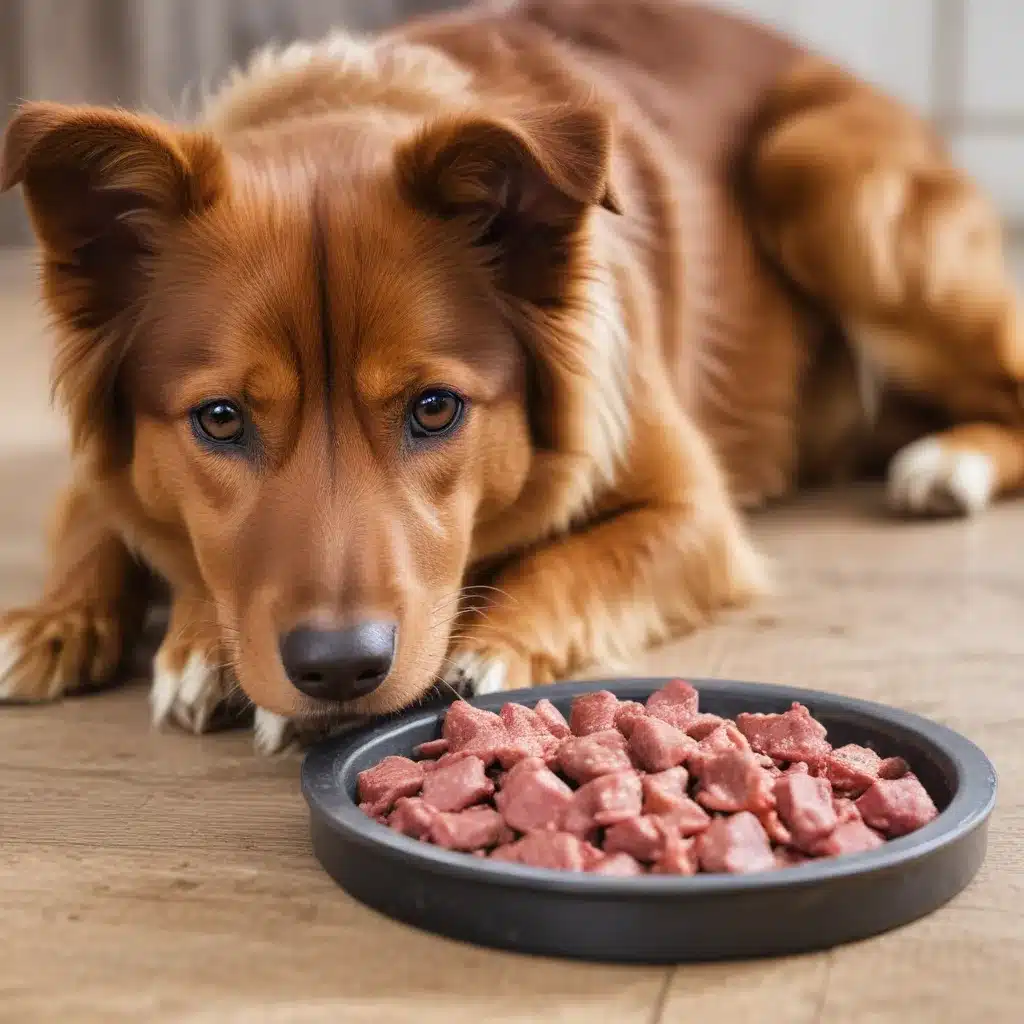
The Raw Truth About Canine Cuisine
As a proud dog parent, I’ve always been on the hunt for the perfect diet to keep my furry companion happy, healthy, and full of energy. When I first heard about raw dog food diets, I have to admit, I was intrigued. The idea of feeding my pup a diet that mirrored what his wild ancestors would have eaten sounded pretty darn appealing. But before I went full “wolf mode” on my dog’s meals, I knew I had to do some serious research to weigh the pros and cons.
The Barf Diet Breakdown
Raw food diets for dogs, often referred to as the “BARF” diet (which stands for “Bones and Raw Food” or “Biologically Appropriate Raw Food”), have been around since the 1990s. The concept was pioneered by Australian veterinarian Ian Billinghurst, who argued that domestic dogs would thrive on a diet of uncooked meats, bones, fruits, and veggies – much like their wild cousins in the canine kingdom.
The premise is simple: ditch the processed kibble and canned goods, and instead, feed your pup a menu of fresh, whole, raw ingredients. Typical BARF diet components include organ meats, muscle meats, whole or ground bones, eggs, dairy products, and an array of fruits and veggies. Some pet owners even add supplements to round out the nutritional profile.
The Potential Perks of Going Raw
Proponents of the raw food diet swear by the potential benefits. They claim that switching to a raw diet can lead to:
- Healthier skin and shinier coats
- Increased energy levels
- Stronger bones and muscles
- Better dental health
- Improved digestion and smaller, firmer stools
- Easier weight management
- Reduced risk of certain health issues like pancreatitis
The argument is that dogs are biologically adapted to thrive on a diet of unprocessed, natural foods – not the heavily manufactured commercial pet foods that have become the norm. By mimicking a dog’s ancestral eating habits, raw diet enthusiasts believe you can optimize your canine’s overall wellbeing.
And let’s not forget the peace of mind that comes with knowing exactly what’s going into your pup’s bowl. As pet owners, we all want to provide the best possible nutrition for our four-legged friends. The ability to hand-select high-quality, fresh ingredients is a major perk of the raw food approach.
The Potential Perils of Going Raw
Of course, the raw diet debate isn’t without its critics. Many veterinarians and pet nutrition experts have raised some serious concerns about the potential risks:
Foodborne Illnesses
Raw meat can harbor all kinds of nasty bacteria like Salmonella, E. coli, and Listeria – bugs that can make both pets and their human families sick. Studies have found that raw dog food is more likely to contain these harmful pathogens compared to other pet food types.
Nutritional Imbalances
Preparing a truly complete and balanced raw diet at home is no easy feat. Research has shown that many homemade and commercially available raw diets fall short when it comes to providing the precise blend of nutrients dogs require. Improper formulation can lead to serious deficiencies or excesses.
Dental and Digestive Dangers
Those raw meaty bones that raw diet fans love? They can actually pose a risk of fractured teeth or digestive obstructions and perforations if swallowed whole. Even if the bones are ground up, they may still be too firm and abrasive for some pups.
Cost and Convenience Concerns
Whipping up fresh, homemade raw meals for your dog takes a lot more time and effort than simply scooping out some kibble. It’s also generally more expensive than buying commercially produced dog food.
The bottom line is that the raw food diet, while seemingly “natural,” comes with some significant safety and nutritional concerns that pet owners need to take very seriously. It’s a big commitment that requires careful planning and execution.
Striking the Right Balance
So, should you put your dog on a raw diet? It’s a complex question without a simple yes or no answer. As with most things in life, the truth probably lies somewhere in the middle.
For some dogs, a balanced raw diet may indeed provide benefits. But for others, the risks may outweigh the rewards. The best approach is to have an open and honest conversation with your veterinarian. They can help you evaluate your pup’s individual needs and determine if a raw diet is the right fit – or if a more traditional, veterinary-approved commercial food is the way to go.
No matter which path you choose, the most important thing is that you’re providing your furry friend with a diet that keeps them happy, healthy, and thriving. After all, isn’t that what being a pet parent is all about?

